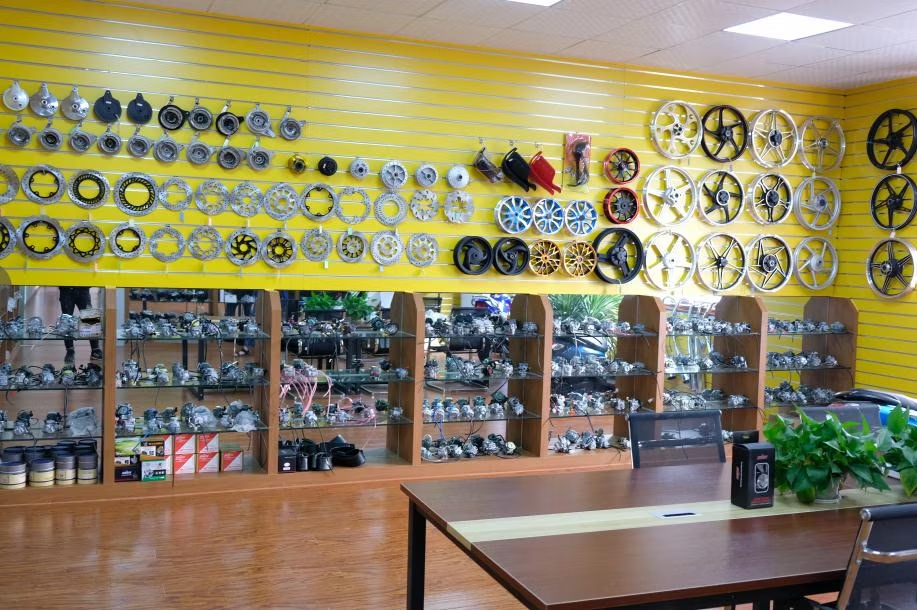Must-Have Motocross Gear: Boost Your Riding Experience Today
Must-Have Motocross Gear: Boost Your Riding Experience Today
Blog Article
Recognizing the Necessary Parts of a Motorcycle: A Comprehensive Guide for Lovers
For motorcycle fanatics looking to boost their riding experience and ensure their bikes run smoothly, comprehending the crucial parts of a bike is vital. Each aspect, from the engine's complex operations to the vital function of the braking devices, not just impacts performance however also security and convenience.
Engine Components

The camshaft plays an essential function in regulating the timing of the engine's shutoffs, ensuring the precise opening and closing required for efficient fuel and air consumption, along with exhaust expulsion. This timing is important to maintaining optimal engine efficiency and efficiency. Additionally, the carburetor or gas injection system, depending upon the bike version, is liable for mixing air with fuel in the correct proportion for combustion.
The air conditioning system, either air or liquid-based, works to preserve the engine's temperature level within functional restrictions, protecting against overheating and making certain long life - motorcycle parts nz. Each component, diligently developed and incorporated, adds to the seamless operation of the engine, specifying the motorcycle's power result and overall efficiency
Transmission System
Important to the motorbike's performance, the transmission system ensures effective power transfer from the engine to the wheels. This system comprises a number of crucial components, including the clutch, gearbox, and last drive, each playing a vital function in translating the engine's power into motion. The clutch, typically operated by a hand bar, serves to disengage the engine and involve from the transmission, enabling smooth gear adjustments and regulated velocity.
The transmission, usually described as the transmission correct, consists of a set of equipments that motorcyclists can manually shift through to adjust the bike's speed and torque outcome. These equipments are set up in a series that allows the motorbike to speed up efficiently and preserve optimum engine performance across numerous rates. A lot of bikes use a consecutive gearbox, needing the cyclist to move equipments in a fixed order.
Braking Devices
While comprehending the transmission system is crucial to utilizing a motorbike's power, just as essential is the capacity to regulate and stop that power effectively, which is where braking mechanisms come right into play. Brakes are essential for security and efficiency, supplying the cyclist with the necessary control to navigate numerous terrains and conditions. Usually, motorbikes feature two types of stopping systems: disc brakes and drum brakes.
Disc brakes are extra widespread in modern-day motorbikes as a result of their superior efficiency. They consist of a brake disc, caliper, and pads. When activated, the caliper squeezes the brake pads versus the rotating disc, transforming kinetic power right into warm, thus slowing the wheel. This system provides far better warm dissipation, click here now constant performance, and boosted stopping power, specifically in wet conditions.
Alternatively, drum brakes, though much less common, are still found in some motorbikes. They diagnostic tools for motorcycle function by pressing brake footwear against the inner surface area of a drum affixed to the wheel. While generally much less effective in warmth dissipation and stopping power, drum brakes are easier and extra cost-effective.
Understanding these braking systems' subtleties enables riders to preserve their motorbikes correctly and appreciate the design that ensures secure and effective stopping.
Suspension and Guiding
Suspension and guiding systems are crucial components that significantly affect a motorcycle's handling and experience comfort. The shock absorber, including forks at the front and shock absorbers at the rear, soaks up roadway irregularities, improving stability and control. Front forks, generally telescopic or upside down, compress and rebound to reduce effects, while back shock absorbers preserve tire call with the road, critical for grip and security.
Steering, focused around the handlebars, attaches the motorcyclist to the bike's directional control. The guiding head bearings ensure smooth procedure, permitting exact maneuverability. Correct alignment and maintenance of these bearings are important for predictable guiding action and reducing motorcyclist exhaustion.
The suspension's adjustability is another vital element; preload, damping, and rebound settings permit personalization to suit various riding conditions and styles. This flexibility is important for maximizing performance, whether navigating metropolitan roads or dealing with rugged routes. Technologies like electronic suspension systems supply real-time modifications, improving ride quality throughout diverse terrains.

Electrical Systems
After making sure a smooth and controlled ride via efficient suspension and guiding systems, focus turns to the electric systems, a pivotal element of modern-day motorcycles. These systems play a crucial function not just in beginning the engine yet also in powering various components that improve the functionality and safety and security of the bike.
At the heart of a motorbike's electrical system is the battery, which shops electrical energy essential for starting the engine and powering auxiliary systems - motorcycle shop. The alternator or generator, coupled with the rectifier-regulator, ensures the battery stays billed while the motorbike functions, transforming power into electric energy and keeping voltage levels
The ignition system, an additional crucial component, is accountable for sparking the air-fuel mixture in the engine's cyndrical tubes. Modern motorcycles often make use of an electronic ignition system, supplying better effectiveness and integrity compared to traditional systems.
Lighting systems, including fronts lights, tail lights, and signs, are likewise essential, guaranteeing presence and security for the motorcyclist. Additional digital components such as sensing units, control systems, visit the site and shows add to advanced attributes like fuel shot management, anti-lock braking systems (ABDOMINAL MUSCLE), and digital control panels, further boosting the riding experience.
Verdict
An extensive understanding of a motorbike's vital components, including the engine, transmission system, braking mechanisms, suspension, guiding, and electric systems, is crucial for fanatics intending to optimize safety and security, convenience, and performance. Proficiency of these elements permits for informed decisions regarding maintenance and upgrades, eventually enhancing the riding experience. By integrating this knowledge, cyclists can guarantee their bikes operate at peak efficiency and integrity, thus optimizing both pleasure and longevity of their cars.
For motorbike lovers looking to elevate their riding experience and ensure their bikes run smoothly, recognizing the essential components of a motorcycle is paramount.Essential to the motorbike's functionality, the transmission system makes sure reliable power transfer from the engine to the wheels.While comprehending the transmission system is essential to taking advantage of a motorbike's power, equally essential is the capability to regulate and stop that power properly, which is where braking mechanisms come into play. Normally, motorcycles feature 2 types of braking systems: disc brakes and drum brakes.
A thorough understanding of a motorbike's crucial elements, consisting of the engine, transmission system, stopping devices, suspension, guiding, and electric systems, is crucial for fanatics intending to enhance convenience, performance, and safety.
Report this page